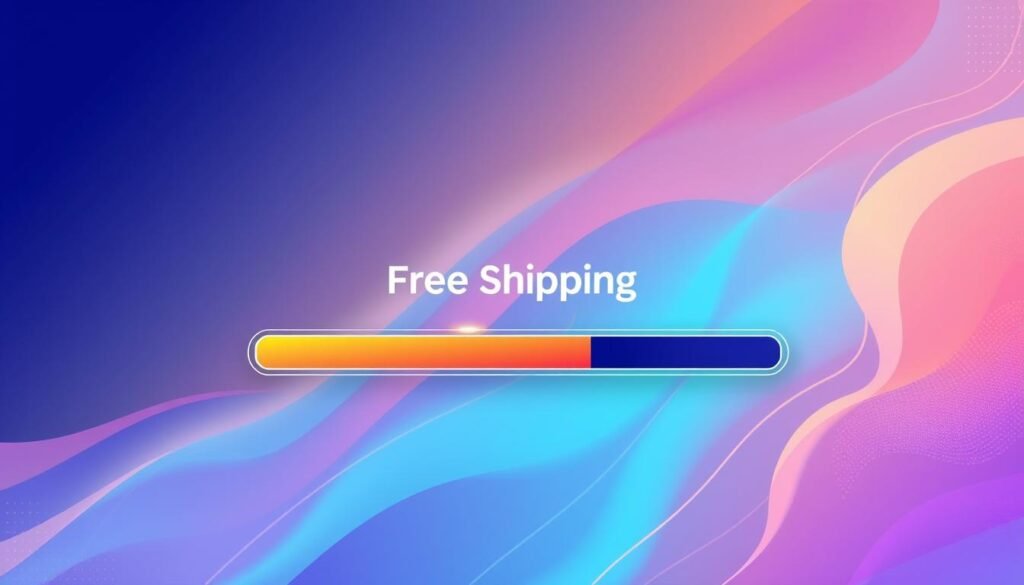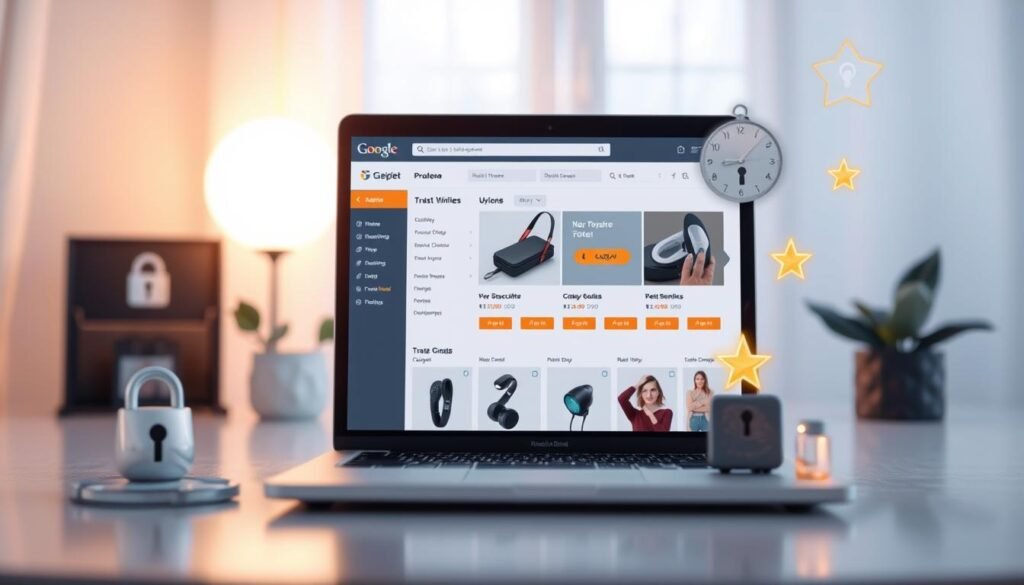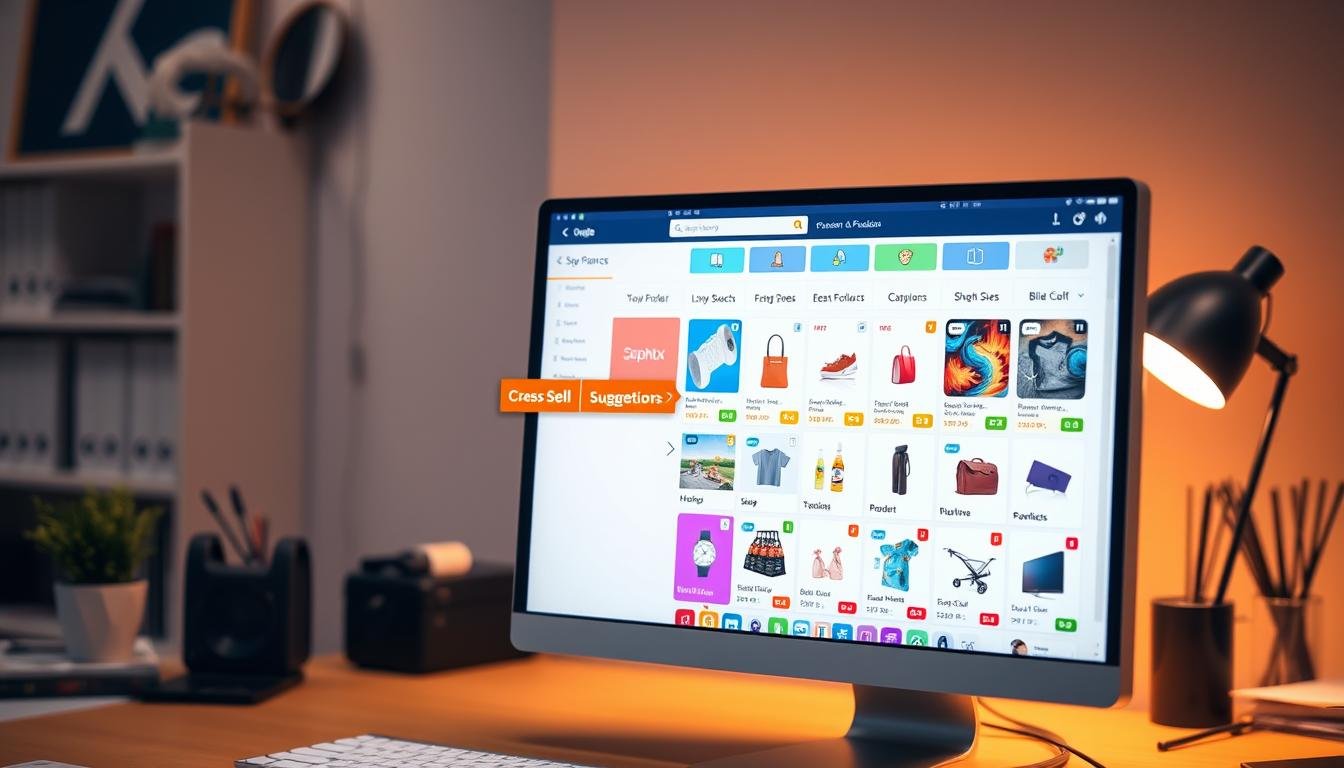Did you know that 75% of online shoppers rely on product photos when deciding on a purchase? This shows how key it is to make your ecommerce product pages better. A good product page can draw more visitors and make them more likely to buy.
In the fast-paced world of ecommerce, even small changes can make a big difference. By using clear call-to-action buttons, high-quality images, detailed descriptions, and consistent branding, you can make pages that attract and convert visitors. Let’s explore 11 top tips for making your product pages better and boosting sales right away.
Key Takeaways
- More than 60% of ecommerce purchases in the US are made on smartphones, highlighting the need for mobile optimization.
- 85% of shoppers find detailed product info and high-quality images key for making buying decisions.
- Clear call-to-action buttons can greatly increase conversion rates.
- High-quality product and lifestyle photos are linked to higher conversion rates.
- Detailed product descriptions can build trust and lower return rates.
What is Product Page Optimization?
Product page optimization is a detailed process. It involves checking and improving your ecommerce product pages’ design, content, and function. The aim is to offer a smooth and personalized shopping experience. It also helps in getting better search engine rankings.
This means making your product pages better in many ways. You work on descriptions, images, prices, customer reviews, and buttons that ask customers to buy. These improvements help build trust and increase the chances of people buying from you.
Now, let’s explore the key parts of product page optimization:
- Audit and Improve Design: A detailed check and improvement of the layout make your pages look good and engaging. This is key to keeping customers interested and improving your page’s performance.
- Personalized Shopping Experience: Making the shopping experience fit each customer’s needs makes it better. This builds a stronger bond with your brand.
- Search Engine Optimization: Using SEO tips helps your pages show up more in search results. This brings in more visitors and can lead to more sales.
Good product page optimization boosts customer trust and drives sales on ecommerce sites. With the global ecommerce market expected to hit $6.3 trillion in 2023, making your product pages better is more important than ever. In a competitive market, using these strategies can help your business stand out among the nearly 4.36 million sellers on platforms like Shopify.
1. Clear Call-to-Action (CTA)
When you optimize your product page, having clear and effective calls-to-action (CTA) is key. Good CTAs can really help users navigate and convert. They make actions like “Add to Cart” or “Buy Now” more likely to lead to sales.
Importance of CTA Placement
Where you place your CTA matters a lot. Putting it above the fold makes it easy for users to see. CTAs at the bottom or right side often work best, thanks to white space around them.
Buttons that are green or orange tend to do well because they’re eye-catching. Having fewer options can also make users happier and more likely to buy. Testing different places and colors is important for better results.
Optimizing CTA for Mobile Devices
More than 60% of US ecommerce sales happen on smartphones. So, making sure your CTA works well on mobile is vital. Make sure CTAs are big enough to tap easily and test them on all devices.
| Factor | Importance | Statistic |
|---|---|---|
| Mobile Optimization | Critical | Over 60% of purchases on smartphones |
| Color Psychology | High | Green and orange buttons perform best |
| A/B Testing | Significant Impact | 90% increase in clicks with first-person text |
Effective CTA Copywriting
Writing good CTA copy is just as important. Use action words and create a sense of urgency, like “limited-time offer.” Keep it short and simple to help users decide fast. Using “Start My Trial” instead of “Start Your Trial” can increase clicks by 90%.
Use clear and direct language to avoid confusion. Words like “Get Started,” “Buy Now,” or “Sign Up” tell users what to do next. This helps boost sales.
2. Progress Bars and Upsell
Adding progress bars to show cart goals like free shipping or discounts can really boost average order value (AOV). A good progress bar, made better with Shopify app integration, makes shopping more fun and can sell more.

Shopify apps like MVR Free Shipping Bar & Upsell let you customize designs and place them anywhere. Free shipping can make sales go up by 37%. MVR Progress Bar is a top pick for its easy design and affordable price of $5.99 a month.
Slide Cart, Sticky Add To Cart is another great option, with a premium plan for $14.99 a month. It’s a discount from $19.99 and has a 4.9-star rating from 560 reviews. These apps make checkout smoother and help customers hit cart goals for more sales.
Here’s a detailed comparison of popular Shopify upsell apps:
| App | Monthly Cost | User Rating | Key Features |
|---|---|---|---|
| MVR Free Shipping Bar and Upsell | $5.99 | 5 stars | User-friendly, cost-effective, has lots of features |
| Slide Cart, Sticky Add To Cart | $14.99 (discounted from $19.99) | 4.9 stars | Premium features, can be placed anywhere, looks great |
By using these tools, you can increase average order value (AOV) and make shopping better. With Shopify apps like MVR Free Shipping Bar & Upsell, reaching cart goals is easier. This encourages customers to buy more and helps your store make more money.
3. High-Quality Product and Lifestyle Photography
Investing in high-quality product and lifestyle images can boost sales and improve your brand’s image. It’s important to show products clearly and tell a compelling brand story. These elements make shopping more enjoyable for customers.
Product Photography
Product photos should be clear and show the product from different angles. The Nikon D850 camera is a top choice for its quality, priced at about $1,800. Adding the 105 mm f/1.4 lens for $740 helps capture product details.
Setting up a studio can cost under $50. Use affordable tripods and poster boards for a white background. Lightboxes and props like coffee beans add context to your photos. Good lighting is key for professional-looking images.
Lifestyle Photography
Lifestyle photos show how a product fits into a customer’s life. This type of photography makes the product more relatable. It’s great for social media and helps customers connect emotionally with the product.
Using natural light is cost-effective and works well for foods and items that look good in earthy tones.
Image Optimization for SEO
High-quality images can turn browsers into buyers and improve SEO. Alt tags are important for better search engine visibility. Adding keywords like product details visualization and brand storytelling to alt text boosts SEO.
Post-processing and image optimization are key to meeting high image standards. Photo editing tools can refine your photos’ quality.
| Equipment | Cost | Description |
|---|---|---|
| Nikon D850 Camera | $1,800 | Excellent for high-quality detailed shots |
| Nikon 105 mm f/1.4 Lens | $740 | Great for capturing product details |
| Affordable Tripods | Less than $30 | Essential for stable photography |
| Poster Boards (10 sheets) | $7 | Used for clean white backgrounds |
Using these strategies and tools can greatly improve your ecommerce site’s photos. This is a solid base for successful brand storytelling and product details visualization.
4. Optimize for Mobile and Page Load Speed
Mobile ecommerce is on the rise. It’s key to make sure your site works well on mobile and loads fast. This helps improve user experience, leading to more sales and happy customers. Over half of all internet use now happens on mobile devices.
Mobile Responsiveness
A site that works on all devices gives users a smooth experience. Studies show that making your site mobile-friendly can keep people on your site longer. You can test your site on different devices using Chrome’s DevTools.
Mobile ecommerce is not just a trend; it’s essential. It’s expected to hit $620.97 billion in sales by 2024.
Page Load Speed
How fast your site loads is very important. If it takes more than three seconds, 53% of users might leave. Using gzip compression and CDNs can make your site load faster.
Improving page speed by just 0.1 second can make a big difference. Faster sites are also better for SEO, as Google and Bing like them. Simple steps like lazy-loading images and combining files can greatly improve user experience and sales.
5. Detailed Product Descriptions
Detailed product descriptions are key to turning browsers into buyers. They offer all the info you need, making users more confident and boosting sales.

Comprehensive Product Information
When writing product descriptions, include every important detail. Talk about the material, sizes, colors, and special features. This detailed info helps customers make smart choices.
For instance, saying a product is ‘water-resistant’ or ‘made from organic cotton’ meets specific needs. It builds trust with the buyer.
Structured Content Layout
A clear layout is vital for easy-to-read product descriptions. Use bullet points, tables, and subheadings to organize your content. This makes it simple for customers to find what they need.
- Bullet Points: Summarize key product features.
- Tables: Compare different product variants.
- Subheadings: Separate sections for specifications, materials, and usage instructions.
Using Video Descriptions
Adding video descriptions can greatly improve the user experience. Videos show off complex features and how to use them. They offer a more engaging way to understand a product’s benefits.
6. Images Linked to Product Variants
Good visuals are key for a great online shopping experience. A Shopify study found that most people like to see many photos of a product. This shows how important it is to offer lots of visual options to help customers make better choices.
Clear Understanding with Variant Images
When shopping online, clear images are essential. They help customers pick the right product and avoid returns. For example, Dr. Martens show their boots’ texture to make customers happier with their buys.
Details like texture, compatibility, and size are important in product images. Close-up photos show the product’s quality. Images of compatibility, like those from Ailkin on Amazon, help customers see if a product fits their needs. Size images, like those for flashlights by Hatori, show how big the product is in a real-world setting.
Customer Customization Options
Offering customization options through images can make customers happier. Showing how different versions of a product look and feel can change the game. This helps customers make better choices.
Allowing customers to personalize products can also impact their decisions. When they can see their customizations, they’re more likely to engage and buy. For example, using a configurator tool can show changes in real-time, helping customers understand their options better.
Using internal linking strategies can also improve the shopping experience. For more tips on improving your Shopify conversion rate, check out improve your Shopify conversion rate. Proper implementation can greatly enhance the user experience and increase sales.
In conclusion, using images wisely ensures customers get a clear view of products and their variants. This is vital for a good online shopping experience. By using different image types and showing both product and lifestyle shots, you can meet various customer needs and create a more engaging shopping space.
7. Consistency in Branding
Keeping your brand’s look and feel the same everywhere is key to keeping customers loyal. Every detail, from design to words, must match your brand’s core. This approach not only keeps users interested but also makes your brand more trustworthy.
Brands that don’t stay consistent can confuse people and lose their interest. When all your product pages look and feel the same, customers know what to expect. This makes them more loyal to your brand. For example, Shopify has seen big gains from keeping its branding consistent, with a boost in sales.
Having a clear story across all your touchpoints can make users more engaged. For instance, TULA’s move to Shopify Plus led to a huge jump in traffic and sales. This shows how important it is to have a strong brand presence. It makes people more likely to buy from brands they trust, with a 46% increase in willingness to pay more.
Also, 85% of shoppers look at product info and images when deciding between brands. Making sure your images and descriptions match your brand can lead to more sales. Plus, using high-quality images with good alt tags helps your site rank better in search results, bringing more people to your site.
- Visual Consistency: Keep colors, fonts, and images the same everywhere.
- Voice and Tone: Use the same tone in all your writing to match your brand.
- Product Information: Make sure product details are clear and consistent to build trust.
Brands should use every chance to show their true self in all interactions. Being consistent in branding creates a unified experience that speaks to your audience. This leads to more engagement and stronger loyalty to your brand.
8. Social Proof: Reviews and Testimonials
Social proof is key in building trust in product quality. It shows customers that others have had good experiences. This section looks at how customer reviews, expert testimonials, and user-generated content (UGC) help make buying decisions easier.
Customer Reviews
Showing customer reviews on product pages is vital. Research shows 93% of consumers are influenced by online reviews. These reviews add to the trust in product quality and share real feedback from others.
Having five reviews can increase the chance of a sale by 270%. This shows how important it is to have positive reviews on your product pages to boost sales.
Expert Testimonials
Expert testimonials add more trust and confidence. When industry leaders endorse your product, it makes your brand more credible. Marketers say influencer marketing is as good as other marketing methods.
This makes it clear that using expert testimonials is a smart move for your social proof strategy.
User-Generated Content (UGC)
UGC, like photos and videos from customers, greatly impacts trust. It shows how your product works in real life. This kind of content makes shopping more engaging and builds trust in your product.
For example, AdQuick saw a 182% increase in conversions and a 59% decrease in CPA with video testimonials. This shows how UGC can strengthen your marketing and increase customer trust.
In summary, using customer reviews, expert testimonials, and UGC gives you strong social proof. It helps build trust and satisfaction, leading to more sales and happy customers.
9. Usage of Meta Tags and Keywords
Using meta tags and keywords on product pages is key for a strong SEO strategy. Meta tags give search algorithms important clues. They help your product pages show up in the right search results.
Meta descriptions are very important. A good meta description can make more people click on your page. Even though they don’t directly affect rankings, they greatly influence clicks. Keep them short, about 160 characters, to give a quick preview of your page.
Meta tags like title and robots tags have direct SEO benefits. The title tag should have main keywords early and be 50-60 characters long. This makes your content match what users are searching for.
Using the right meta tags can also improve user experience. Unique meta descriptions and title tags help search engines understand your pages better. This leads to more accurate search results.
The meta robots tag controls how search engines crawl and index your pages. By setting index, follow, or noindex values, you control your site’s visibility. For global sites, the hreflang tag is key for international SEO, directing users to the right version of your site.
Optimizing images with alt attributes is also important. It makes your site more accessible and gives you a chance to use more keywords. This boosts your SEO strategy and helps your pages rank better in image searches.
Canonical tags are great for managing duplicate content. They tell search engines which URL to prioritize, preventing ranking dilution. This keeps your site’s content strong and signals to search engines which page to rank higher.
Meta tags do a lot, from boosting CTR to improving search engine ranking improvement. When used well, they greatly enhance your product page’s SEO. This drives more qualified traffic and can lead to more sales.
10. Incorporating Related and Recommended Products
Adding related and recommended products to your product pages makes shopping better for your customers. It lets them see products that go well with what they’re looking at or offers them something better. This opens up chances for upselling and cross-selling.
This approach not only keeps customers interested but also helps them spend more. In fact, sites that show related products well can see their average order value go up by 25%. Also, 73% of online shoppers like to buy related items when suggested.
To make your product pages better, consider these points and strategies:
- Boosts Average Order Value: Suggesting related and more expensive products can encourage customers to buy more.
- Enhances Customer Satisfaction: Custom recommendations make customers feel understood and valued, improving their shopping experience.
- Increases Engagement: Showing cross-selling options makes browsing more fun, leading to longer visits and more chances to buy.
Some categories make up 80% of the sales on e-commerce sites. So, it’s key to focus on SEO for these areas. Good SEO for these recommendations can help you sell more. Using meta tags and keywords in product descriptions helps with search rankings and linking, which are important for SEO.
| Benefit | Impact on Business |
|---|---|
| Higher Average Order Value | +25% increase |
| Enhanced User Experience | 73% shoppers prefer related products |
| Increased Engagement | Longer session durations |
By focusing on these changes, you can grow your revenue. Make sure your product pages are not just good for search engines but also meet what customers want.
11. Trust Signals and Secure Checkout Options
Adding trust signals like shipping and payment details to your product pages is key. Trust badges and security certificates also play a big role. They make sure customers feel safe and their info is protected.
Shipping and Payment Options
Offering many shipping and payment options helps keep customers happy. About 70% of shoppers leave their carts if they can’t use their preferred payment. Having various options, like bundles and discounts, boosts trust in your site.
Features like Shop Pay’s 1-click checkout make buying easier and faster. Google Autocomplete helps fill in addresses, saving time and reducing errors. This makes the checkout process smoother and more secure.
Trust Badges and Security Certificates
Trust badges and security certificates are important for showing that transactions are safe. Displaying them on your product pages can ease any doubts customers may have. They show that your site is secure, making customers more confident in their purchases.
Trust signals are vital for building trust in your ecommerce site. Elements like trust badges, reviews, and testimonials help customers feel more secure. This can lead to higher sales and more customer loyalty.
To learn more about trust signals, check out this guide on trust signals. Using these strategies can make your customers feel more at ease. This can lead to more sales and loyal customers.
| Element | Impact |
|---|---|
| Shipping Options | Reduces Cart Abandonment |
| Payment Options | Increases Conversion Rates |
| Trust Badges | Builds Customer Trust |
| Security Certificates | Ensures Secure Transactions |
| Google Autocomplete | Reduces Mobile Errors |
Conclusion
Optimizing product pages is more than just making them look good. It’s about creating a smooth and engaging shopping experience for your customers. High-quality images are essential to show products clearly and accurately. This helps increase sales and makes customers feel more confident.
Adding 360-degree views, image zoom, and product videos can also boost sales. These features make it easier for customers to see what they’re buying. Mobile optimization is also key, as more people shop on their phones. Making sure your site works well on mobile can help sell more.
Clear and persuasive product descriptions are important too. They help turn visitors into buyers. Using bullet points, concise pricing, and clear availability information makes things easier to read. This builds trust with your customers.
Social proof, like customer reviews and testimonials, adds credibility. A huge 95% of consumers check reviews before buying online. This shows how important it is to include this feature. Trust signals, secure checkout options, and recommended products also help sell more.
By using these strategies, you can make your shopping experience more compelling and trustworthy. This will drive more conversions and help your ecommerce success grow.


